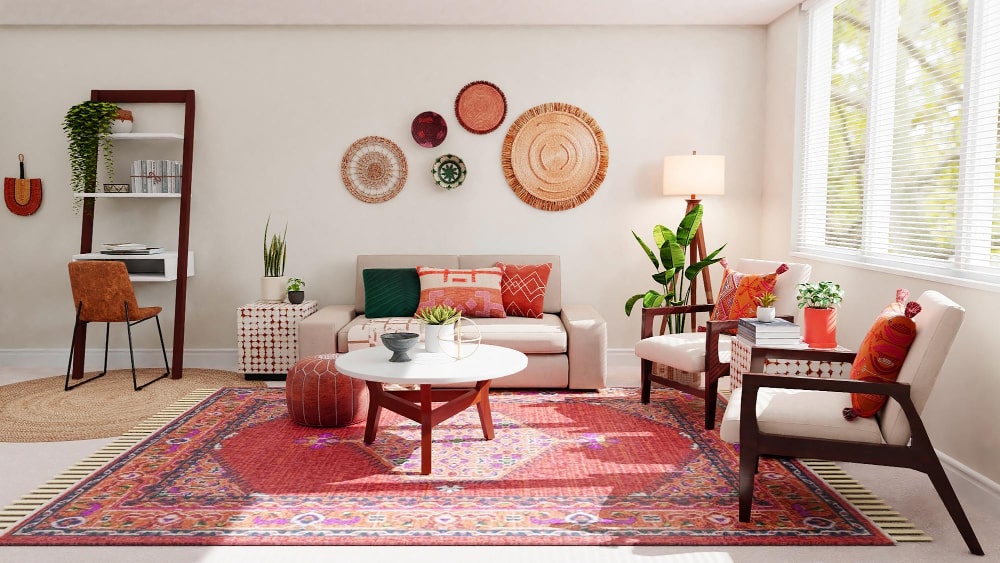Change Your Home With Essential Principles of Interior Style and Appearances
By comprehending the effect of color concept and the relevance of structure and patterns, one can create areas that are not only aesthetically enticing however also deeply individual. Accomplishing this equilibrium entails even more than simple decoration; it incorporates a calculated arrangement and an eager understanding of exactly how each element interacts within a space.
Comprehending Shade Concept
Color concept is an essential aspect of interior decoration that substantially influences state of mind, perception, and total aesthetic. Comprehending the principles of shade theory permits designers to produce spaces that resonate emotionally with passengers while fulfilling useful requirements (miami luxury interior design). Shades can be categorized right into three main kinds: main, second, and tertiary. Each classification plays a critical duty in developing consistency within a space.
The emotional impact of colors is extensive; warm tones such as reds and oranges evoke power and heat, while awesome tones like blues and eco-friendlies advertise peace and tranquility. The usage of corresponding shades boosts aesthetic interest, creating striking contrasts that can elevate a room's appeal.
Neutral colors, on the various other hand, work as a versatile backdrop, allowing other design elements to beam. It is vital to consider factors such as lighting and the room's purpose when picking a shade scheme, as these can modify the assumption of shades throughout the day.
Inevitably, a well-considered shade scheme can transform a space, fostering a sense of convenience and design that lines up with the residents' choices. Mastery of color theory is, therefore, an essential ability for any type of interior designer intending to produce harmonious and inviting settings.
Accomplishing Balance in Design
Just how can developers accomplish a sense of stability in their spaces? Achieving equilibrium in style is fundamental to creating unified insides. Developers can use three key kinds of balance: balanced, asymmetrical, and radial. Symmetrical equilibrium involves arranging aspects evenly around a main point, cultivating a sense of order and harmony. This kind typically includes pairs of furniture or artwork, improving aesthetic security.
Unbalanced balance, on the various other hand, depends on varying elements that still attain a cohesive appearance. This approach enables even more vibrant and casual plans, giving rate of interest while preserving equilibrium. By very carefully choosing differing sizes, colors, and appearances, designers can produce an aesthetically compelling area that really feels balanced yet energetic.
Radial equilibrium emphasizes a main centerpiece with components radiating outside. This design is commonly seen in circular formats, where furniture and decoration develop a natural surround that draws the eye internal.
Inevitably, achieving balance needs thoughtful factor to consider of range, proportion, and the relationships between components. Architecture Firm. By masterfully using these equilibrium concepts, designers can transform areas into atmospheres that really feel both cosmetically pleasing and functionally unified, boosting the total experience for occupants
Significance of Spatial Understanding

An eager feeling of spatial understanding enables developers to recognize prime focus within a room, guiding the viewer's interest to crucial attributes while keeping a total feeling of unity. It additionally assists miami interior design in the tactical placement of lighting, which can considerably affect the assumption of area and mood. In addition, understanding spatial partnerships makes it possible for the developer to accommodate the details requirements of occupants, making certain that each location serves its designated purpose without compromising visual appeals.
Inevitably, spatial awareness is crucial for optimizing the capacity of any interior room. By very carefully considering the interaction between dimensions, format, and feature, designers can create environments that not just satisfy practical demands however additionally evoke a feeling of convenience and charm, improving the total living experience.
Integrating Texture and Patterns
Welcoming a varied array of structures and patterns can significantly improve the visual and responsive allure of an indoor space. The tactical usage of numerous materials-- such as timber, steel, material, and rock-- creates depth and passion, making a room really feel more inviting and vibrant. Incorporating smooth surfaces with rough appearances can develop a balance that attracts the eye and involves the senses.
When including patterns, think about both range and repetition. Large patterns can act as centerpieces, while smaller, subtle layouts can enhance other aspects without frustrating the room. Layering patterns, such as pairing floral cushions with striped throws, includes intricacy you can look here and a feeling of harmony if performed thoughtfully.
It is likewise important to preserve a cohesive color palette, ensuring that appearances and patterns collaborate instead than contend for interest. By selecting a few key appearances and patterns, you can create an unified visual that shows your personal style while boosting the overall ambiance of the area. Inevitably, the cautious incorporation of these elements can change a mundane area into an innovative setting rich with character and heat.
Customizing Your Space
Creating a room that shows your personality is essential to accomplishing a truly welcoming atmosphere. Personalization in interior decoration allows you to instill your distinct style and interests right into your home, transforming it from a plain shelter right into a shelter that speaks with that you are. Begin by choosing a color palette that reverberates with your emotions-- vibrant shades can invigorate, while soft tones offer peace.
Incorporate art work and design that mirror your passions, whether it be traveling, nature, or abstract concepts. Presenting personal collections, such as publications, photographs, or mementos, can stimulate treasured memories and develop centerpieces within an area. Additionally, take into consideration customizing practical items, like upholstered furniture, to line up with your visual choices.

Final Thought
To conclude, the transformation of a home with the crucial principles of interior decoration and aesthetic appeal demands a comprehensive understanding of color concept, equilibrium, spatial recognition, texture, and customization. Each component adds considerably to producing an unified and practical living setting - interior design firms. By attentively incorporating these concepts, people can boost the aesthetic allure and psychological vibration of their try this out spaces, eventually fostering a home that shows distinct identities while offering comfort and functionality